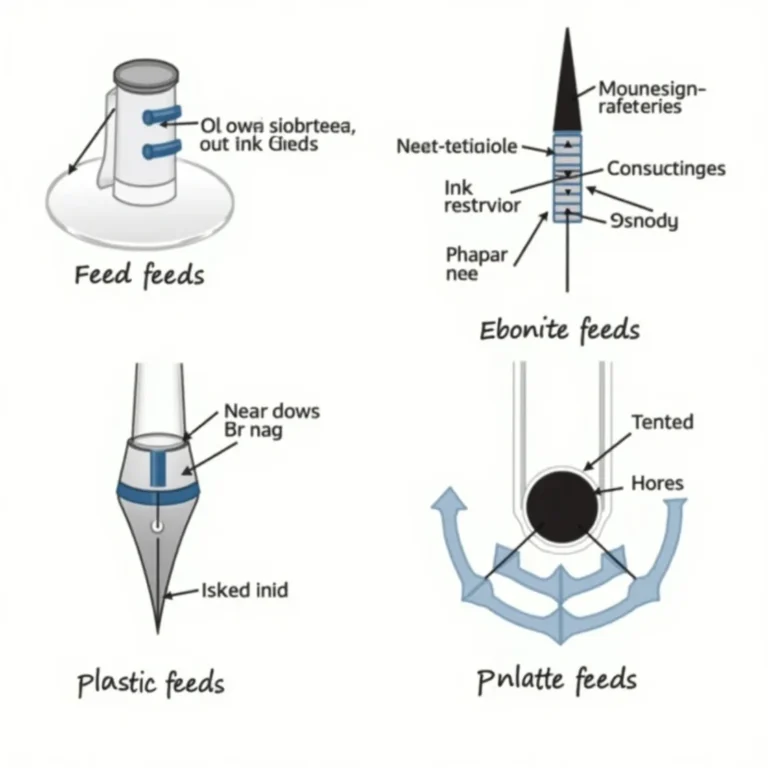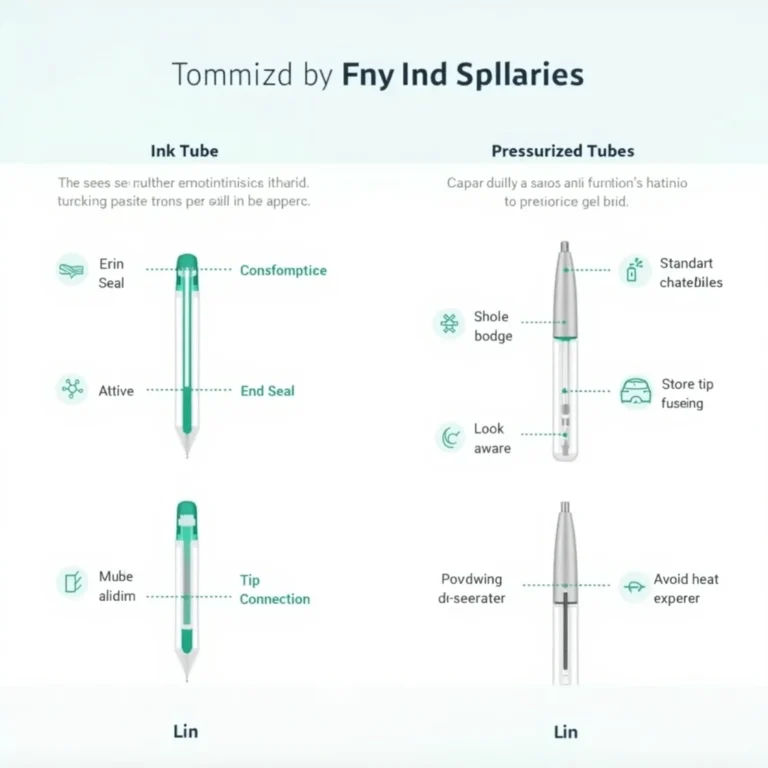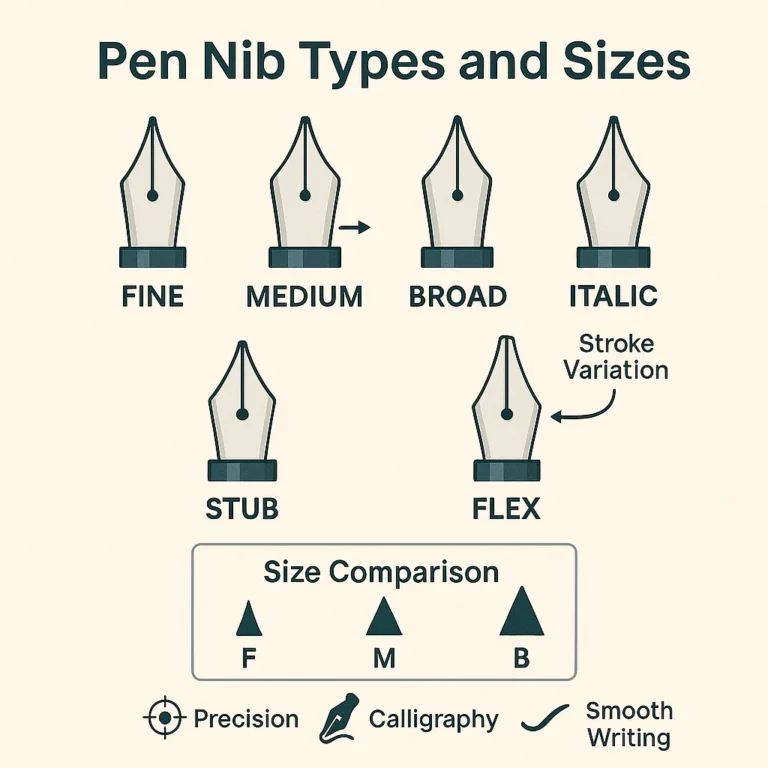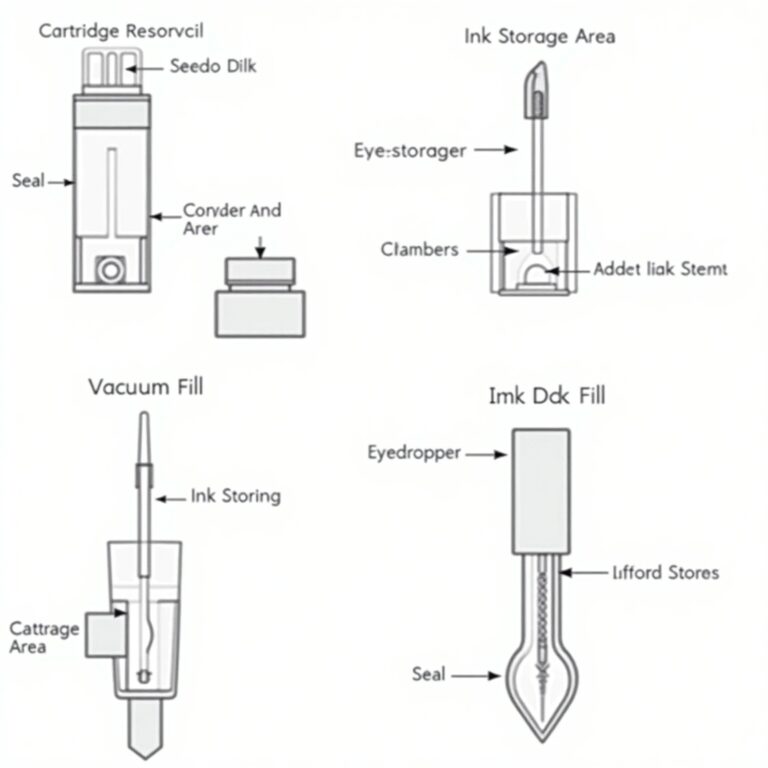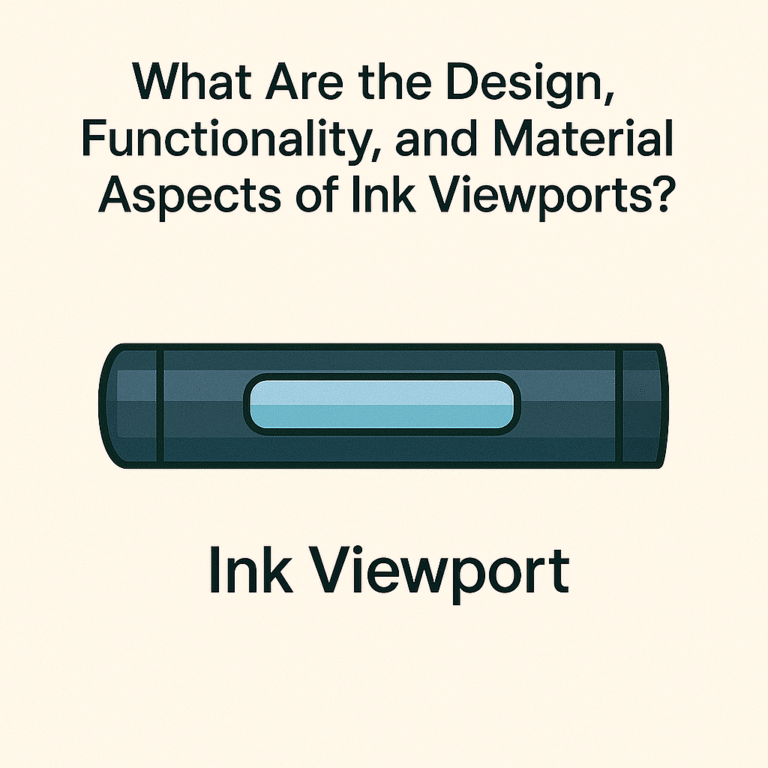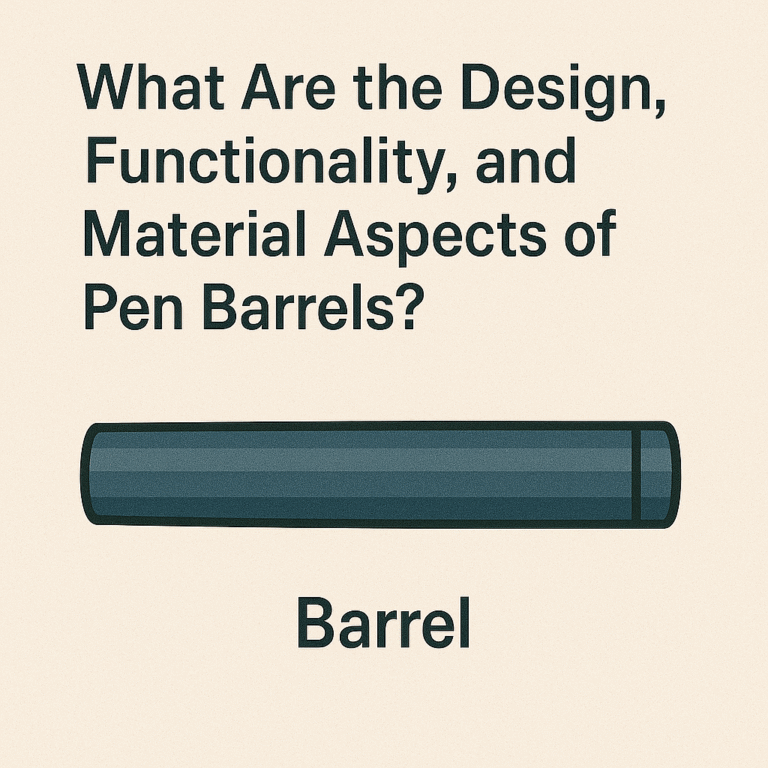What Are The Design, Functionality, And Material Aspects Of Pen End Caps?
Caps are crucial for smooth writing. They come in different designs like slip-on or screw-on types. Materials vary too, from plastic to metal. For fountain pens, the inner cap needs a tight seal to control ink flow.This prevents leaks and ensures even ink on paper.
Key Takeaways
- Pen caps come in two types: slip-on and screw-on. Slip-on caps are easy to remove but can fall off. Screw-on caps are tighter and protect the pen better.
- Caps keep the pen tip safe and stop ink from drying out. This helps ballpoint and fountain pens write smoothly.
- Pens use materials like plastic, metal, and wood for their end caps. Metal makes pens heavy but durable. Plastic is light and flexible. Wood looks unique but needs strong materials to last.

Design Aspects of Pen End Caps
Pen caps, made of plastic or metal, combine style with function. Some use a slip-on design for easy access, while screw-on caps protect the ink and ensure smooth writing.
Aesthetic considerations
In the pen world, design matters a lot for fountain pens. The color, shape, and finish of the end caps can make a pen stand out as an art piece. Some caps grab attention with bright colors or unique designs.
Others are sleek and shiny, giving a professional look.
Ergonomics is also key. How the cap feels in your hand is as important as its appearance. A well-designed cap is comfortable to hold, making writing smooth and enjoyable. Caps can be plastic, metal, or wood.
This choice affects the pen’s weight and balance in your hand. So when you pick up a fountain pen or ballpoint with an interesting cap—notice its design! It influences how good you feel while writing.
Ergonomic features
Pen caps have ergonomic features for a comfortable grip, reducing hand strain during prolonged writing. Some fountain pen caps include grips near the base, aiding in smooth writing by ensuring proper hold.
Screw-on caps require twisting to open or close, offering a tighter fit that keeps the pen secure. Slip-on caps are easier and faster to remove but might not stay on as securely. Both designs aim to provide easy use while protecting the pen when not in use.
Cap mechanics: screw-on vs. slip-on
After exploring ergonomic features, we shift focus to cap mechanics. The way you attach or remove your pen cap matters. Pen caps come in two main types: screw-on and slip-on. Here’s a straightforward comparison.
| Feature | Screw-on Caps | Slip-on Caps |
|---|---|---|
| Method | Twist to open or close | Push or pull to open or close |
| Security | More secure, prevents accidental opening | Less secure, can come off easily |
| Time to Open/Close | Takes more time | Quick and easy |
| Wear and Tear | Threads can wear out over time | Cap can become loose over time |
| Preferred Use | High-end pens, luxury items | Everyday pens, convenient for quick use |
Each type suits different needs. Screw-on caps work well for those who value security and luxury in their writing tools. Slip-on caps cater to those seeking quick, easy access to their pens. Choose based on your lifestyle and writing habits.
Functionality of Pen End Caps
Pen end caps protect the pen tip and prevent ink from drying out, ensuring the writing instrument is always ready for use.
Protection of nib or tip
Caps protect the pen’s nib, keeping it safe from damage. This is key for fountain pens, which have exposed nibs vulnerable to bending or breaking. A cap ensures the writing instrument remains in good condition.
Moreover, caps prevent ink from drying out. This applies to both ballpoint pens and fountain pens. With a cap, ink stays wet, allowing for smooth writing every time you use the pen.
Without a cap, dried-out ink would make writing difficult.
In summary, caps are essential for maintaining both the physical integrity of the pen tip and the quality of its ink flow. They help ensure that your writing experience stays consistent and enjoyable.
Prevention of ink drying
Pen tips need protection to stay sharp. To keep ink from drying, caps are crucial. They block air and hold moisture in, ensuring smooth ink flow for your next use.
Fountain pens have inner caps that seal tightly around the grip section. This prevents air from reaching the nib and ink reservoir, stopping the ink from drying whether you choose screw-on or slip-on caps.
The fit of these caps is key to avoid leaks or drying.
The material of a cap matters too. Plastic and metal are effective in blocking air because they form strong seals through precision engineering, like injection moulding.
Always capping your pen after use ensures it’s ready for smooth writing anytime you need it.
Securing the pen during non-use
Pen caps stop ink from drying out and protect the pen when not in use. Caps click or twist on, preventing the pen from rolling away or getting lost. Screw-on caps secure fountain pens well but take longer to open.
Slip-on caps work faster, ideal for frequently used ballpoint pens.
Caps may have clips for attaching the pen to a notebook or pocket, keeping it handy all day. Pens use either light plastic caps for everyday writing tools or heavier metal ones for luxury fountain pens.
These features keep your pen safe and ready for your next use.
Material Aspects of Pen End Caps
The material of pen end caps, like plastics, metals, and woods, directly affects their durability, weight, and environmental impact. These materials influence your writing experience by altering the feel and performance of writing instruments.
Commonly used materials: plastic, metal, wood
Plastic, metal, and wood are common choices for fountain pen caps. Plastic, given its light weight and adaptability, is easily molded into slip-on caps that securely fit over the grip section.
Metal caps, known for their strength and longevity, are perfect for screw-on designs that prevent the ink from drying out. Wood, with its unique patterns, provides a distinctive aesthetic.
Pen manufacturers select these materials to balance longevity and convenience. The use of injection-molded plastic provides a blend of durability and lightness, thus ensuring daily use comfort.
The inclusion of metal enhances weight and safeguards the internal cap and ink reservoir from potential harm during transit. Wood caps lend a touch of natural allure to the design of fountain pens while being replenishable.
Each material fulfills a certain requirement: protection, design, or sustainability.
Durability and lightweight properties
Aluminum is strong and light, perfect for fountain pen caps. Ballpoint pens often use durable yet lightweight plastics for their caps. Wood adds a unique look but needs careful choice to keep the cap both strong and light.
The material of the pen cap affects its durability and how easy it is to carry. These materials also impact environmental health.
Conclusion
Pen caps are essential for pen design, making sure the writing tip is protected and ink doesn’t dry out. They come in screw-on and slip-on types for style and convenience. These caps are made from plastic, metal, or wood to be strong yet lightweight.
Their materials also show a concern for the environment. With these features, pens can write smoothly, last longer, and look attractive.
FAQs
1. What is the purpose of a pen end cap?
A pen end cap, found on writing instruments like fountain pens or ballpoint pens, serves multiple functions. It covers the pen nib to protect it and helps regulate ink flow from the ink reservoir or cartridge.
2. How does a fountain pen cap design influence its functionality?
The design of a fountain pen cap plays an important role in its function. For instance, screw-on caps provide a secure seal over the grip section and prevent ink leakage while slip-on caps offer quick access to the pen tip.
3. Are all end caps made with similar materials?
No, they aren’t! End caps can be made from various materials including injection moulded plastic or metal varnish finished ones that not only add aesthetic value but also durability to these writing tools.
4. What’s unique about the inner cap of a fountain pen?
An inner cap for a fountain-pen often has an anatomy resembling truncated cone shape which acts like decompression throttles in pistons or valves in bicycle tires ensuring smooth and controlled ink flow regulation towards the nib during use.
5. Does every type of pen need an end-cap?
While most types of pens do have some form of end-cap, their necessity varies depending on their design and function; for example, while it’s essential for preventing leaks in fountain pens by sealing off the ink reservoir or cartridge when not used, ballpoint pens might not require them as such due to different internal mechanisms.
